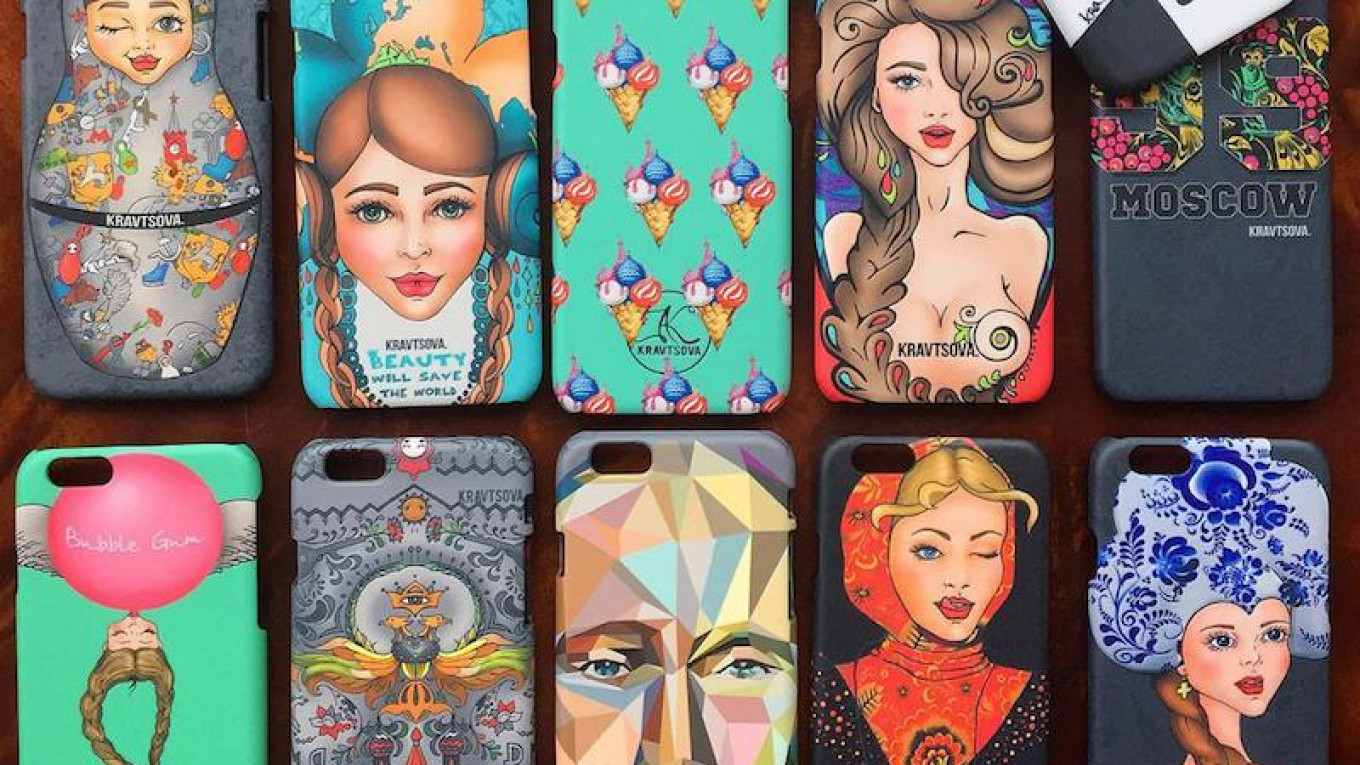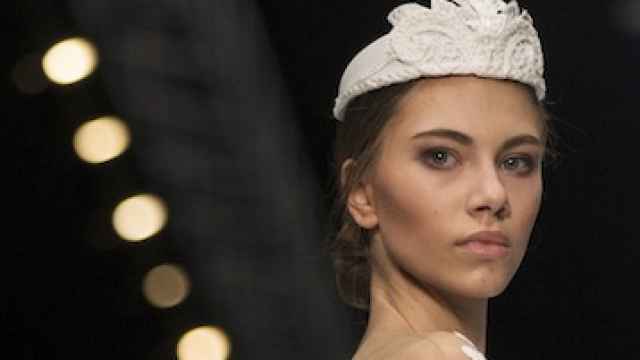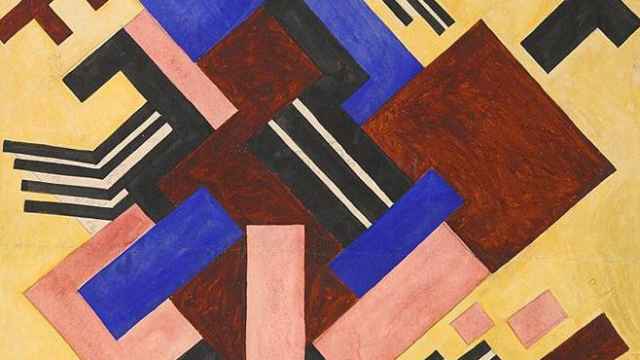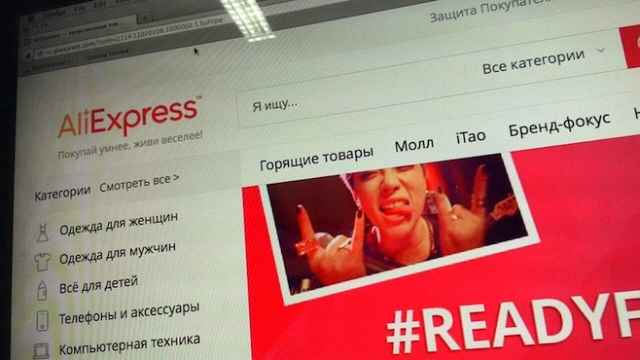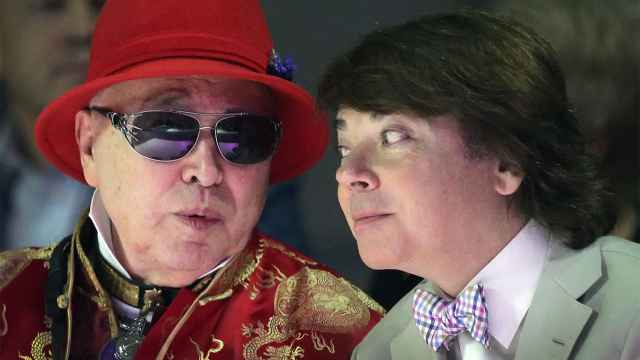For T-shirt manufacturer Alexander Konasov, 2014 and 2015 were particularly good years. It all started in February 2014, when Russia annexed Crimea, and set free a wave of Kremlin-sanctioned nationalism. War fueled a demand for simple, patriotic-themed clothing. Konasov’s company was one of the first to sense the business opportunity.
“If you catch the moment there is a colossal amount of money to be made,” says Konasov, 28, who now owns 45 shops across Russia, including one by Moscow’s central Pushkin Square. “Patriotic-themed T-shirts displaced all the others because they sold ten times better.”
Two years on from the height of the military confrontation with Ukraine, Russia finds itself in the middle of its longest recession since the 1990s. And the demand for patriotic gear is back to pre-Crimea levels. “We are not earning very much now,” Konasov says.
But the decline in the popularity of Putin T-shirts appears to illustrate a broader shift. As Russians feel the ever-sharper bite of economic recession, the country’s patriotic fashion mania and hunger for President Vladimir Putin-themed T-shirts appears to have changed into a nostalgia-driven focus on history, vintage glories and folk traditions.
From Shoigu to the Tsars
The career of prominent designer Leonid
Alexeyev, who studied fashion at London’s prestigious Central Saint
Martin's, reflects the changing mood of Russia’s fashion industry.
The bohemian Alexeyev raised eyebrows among friends and colleagues in February 2014 when he accepted a job to head a design bureau at Russia’s Defense Ministry amid the military occupation of Crimea. Last year at Moscow’s Mercedes-Benz Fashion Week, a collection designed by Alexeyev, featuring lots of balaclavas and khaki, used the theme of “polite people” — a popular term for the Russian soldiers in unmarked uniforms who seized Crimea. One of the slogans emblazoned across the items displayed by male models was “politeness takes towns.”
But Alexeyev quit his job at the Defense Ministry at the end of 2015. “Nothing lasts ... the wonderful thing about fashion is that you can alter your personality in the space of an hour,” says Alexeyev. His latest collection is based on the dresses worn by Olga, Tatyana, Maria and Anastasia — the four daughters of Russia’s last tsar. The dresses are all short, made to be worn outside in the summer, and use traditional Russian sewing techniques and materials. “People are bored and haven’t found anything new so there is a return to the historical,” he says. “When everything is bad you want to return to a place where there are no problems.”
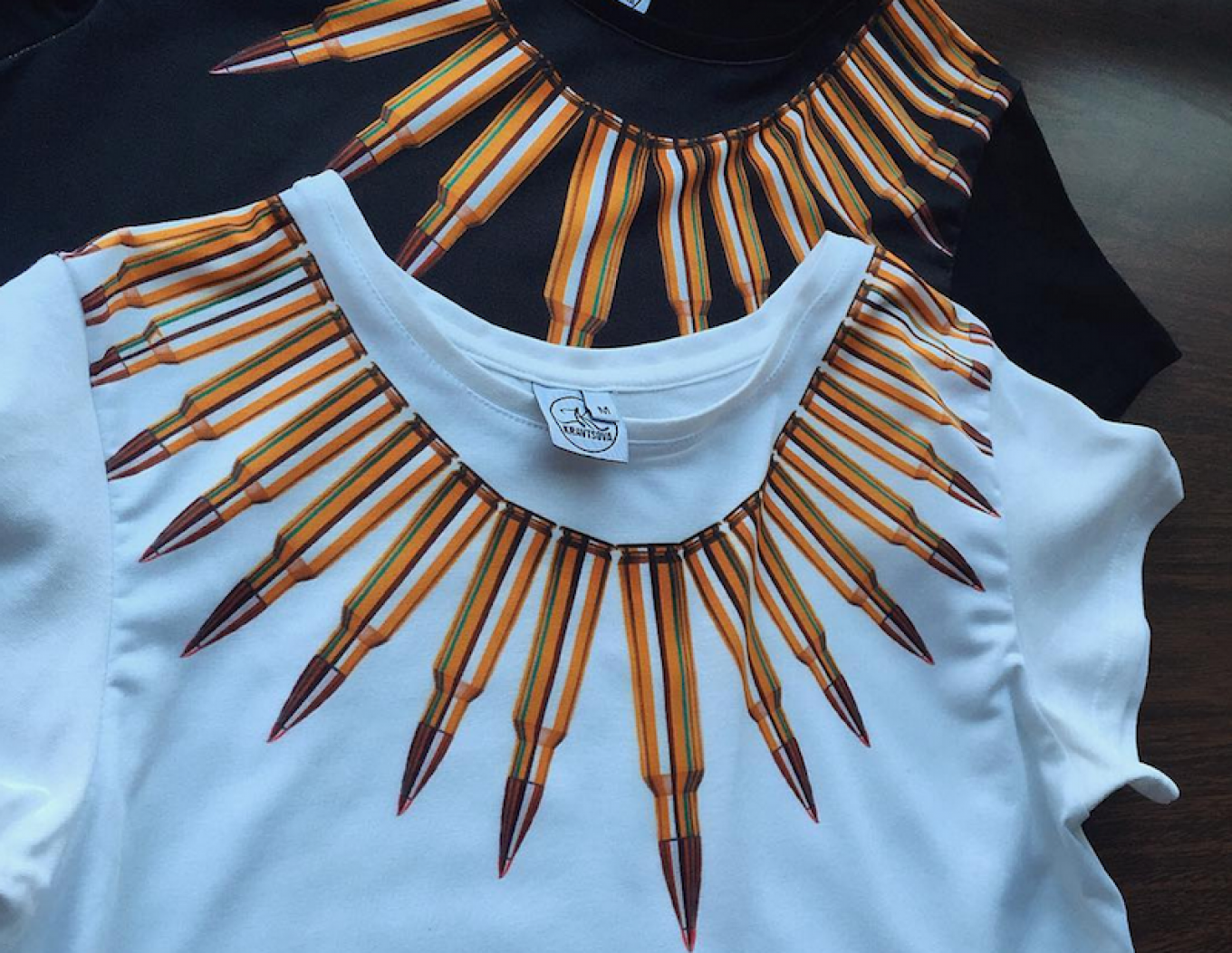
Reality Bites
The shift away from displaying the brash patriotism of 2014 and 2015 on clothes is in part explained by changing tastes. But the process appears to have been accelerated by the economic and social problems that have stacked up in Russia amid a collapse in oil prices and Western sanctions over Ukraine. Russia’s gross domestic product (GDP) contracted 3.7 percent last year and is on course to fall again this year. Real wages collapsed 9.5 percent over the same period and are not expected to resume growth until 2017. Poverty levels are currently at their highest for almost a decade. Many experts fear Russia faces years of economic stagnation.
Nationalist sentiment was briefly reignited by the beginning of an armed Russian intervention in Syria’s civil war — its first in the Middle East for decades. But most of the military presence was withdrawn in March. Economic woes appear to have underwritten the shift toward clothing that draws inspiration from a more distant history as people seek distraction from the day-to-day. The collapse of the ruble has also fueled this trend. Foreign imports have become more expensive and Russian-made and Russian-designed clothing has become more attractive.
Popularizing the Military
Some state behemoths, with large financial backing, are not put off by the economic troubles or the apparent fall in demand for Putin T-shirts. Instead, they are doggedly pushing forward in attempts to sell their own brands of patriotic and military clothing.
The Russian Defense Ministry recently launched its Armia Rossii brand and has outlets in prime locations in Moscow, St. Petersburg and the southern city of Krasnodar. Iconic weapons manufacturer Kalashnikov is reportedly planning to roll out its own brand of sporting and outdoor clothing later this year. The most recent branch of Armia Rossii opened in May opposite the U.S. Embassy in Moscow. It sells T-shirts with pictures of Russian military hardware, jokes about the seizure of Crimea and portraits of Putin — as well as flags, figurines and real military uniforms. It is unclear how much money the Defense Ministry is making from the project, if any at all. A spokesperson for Armia Rossii declined to comment.
Some of designer Alexeyev’s clothing lines are featured in the stores. He says the idea for the brand was thought up personally by Defense Minister Sergei Shoigu as a way of popularizing the military rather than earning money.
T-shirt manufacturer Konasov says companies like the Defense Ministry were unlikely to be driven by commercial aims. “They have a shop near Triumfalnaya Ploshchad [in downtown Moscow] that I drive past all the time. I see them washing the windows but the shop is still shut. It’s been like that for half a year,” Konasov says. “If we paid the rent for that shop for 6 months without opening we would have gone under ages ago.”
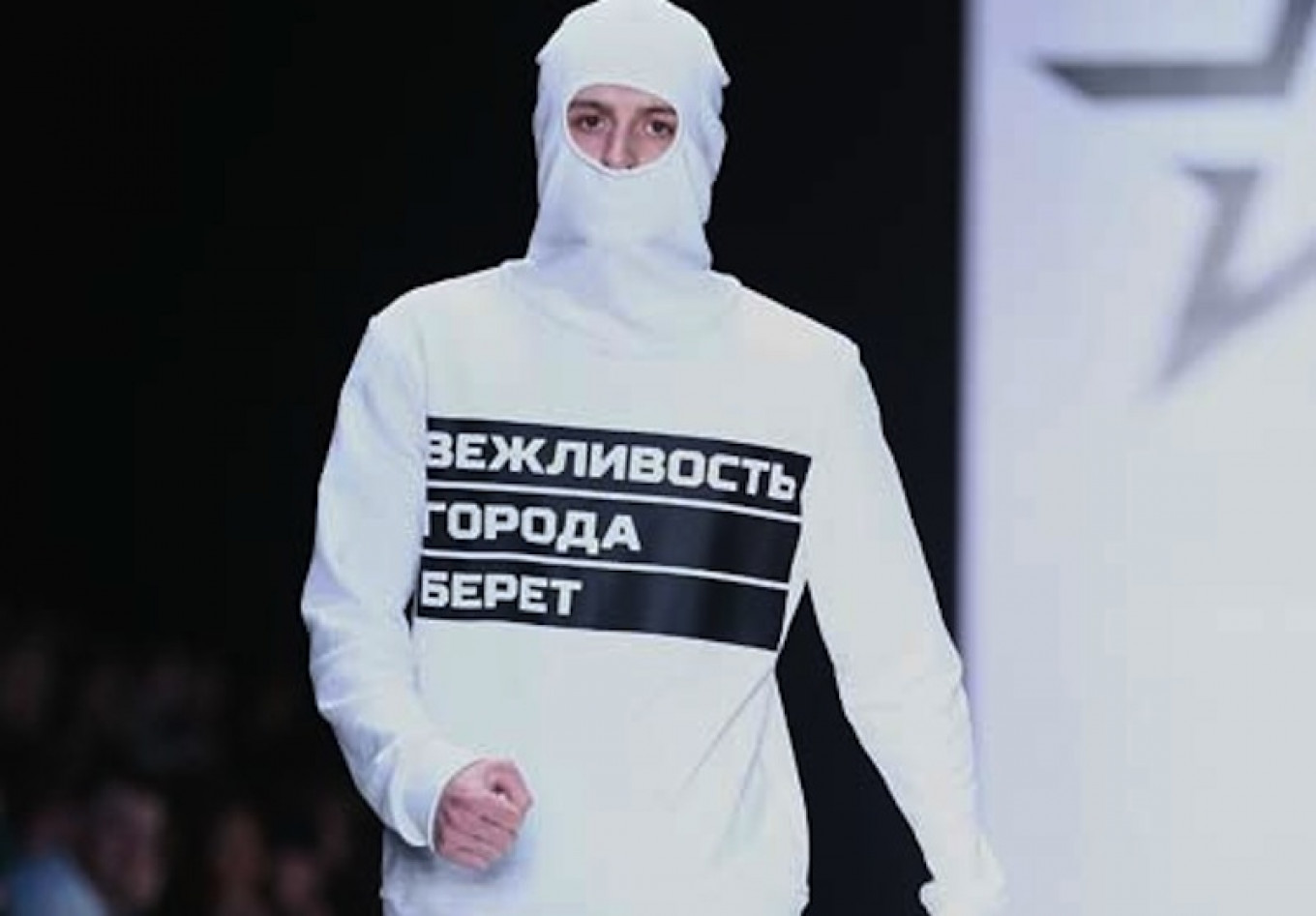
Kremlin Approved Design?
There is no evidence that any patriotic clothing manufacturers have received financial support from the Kremlin. Konasov said an official request he submitted to the presidential administration seeking permission to use Putin’s image was redirected to the Moscow government and he never got an answer.
But groups close to the Kremlin have sought to back the fledgling patriotic fashion industry in the wake of the Ukraine crisis. Set, a pro-Putin youth movement advocating political conservatism and fanatical support for the president, put on a fashion show for patriotic designers, called New Russian, last year.
“In Russia there are hundreds of thousands of young, modern, patriotic people ... If you put it in simple terms they have Putin on their T-shirts and an iPhone in their pocket,” says Set’s Maria Alyoshkina, who organized New Russian.
The event in June 2015 showcased the work of 200 different patriotic designers and was judged by Russian fashion veteran Vyacheslav Zaitsev. Prizes were awarded in four categories: Imperial, Victory, the 1990s and New Russian.
Shifting Focus
But many of the designers at New Russian appear to have moved on. Designers contacted by The Moscow Times who took part in New Russian with collections that featured Putin said they were no longer designing clothes using the Russian president.
Anna Kreidenko designed a collection last year called Putinversteher, or People Who Understand Putin, which was featured at New Russian. Her range of summer clothes for men and women was made up of print designs using phrases from Putin’s 2014 State of the Nation address.
But Kreidenko’s line of clothing was sold out by the end of 2015 — and now she is focused on making a success of her sewing business, which currently employs seven people. One collection she has produced since Putinversteher took the Moscow metro as its inspiration.
Ksenia Kravtsova, who was placed fourth at the New Russian event, set up a clothing company to explore patriotic themes four years ago —before the Ukraine crisis. After 2014 she released T-shirts with Putin, but her upcoming collection will feature designs based on figures from Russian history and literature, including reforming Tsar Peter the Great and poet Alexander Pushkin. She says one of the most popular designs in her online store melds ice cream, onion domes and the blue, white and red of the Russian flag.
“Cliched photographs are not interesting anymore,” she says, whereas Russian folk designs and ideas that explore where Russians came from have an “eternal” relevance.
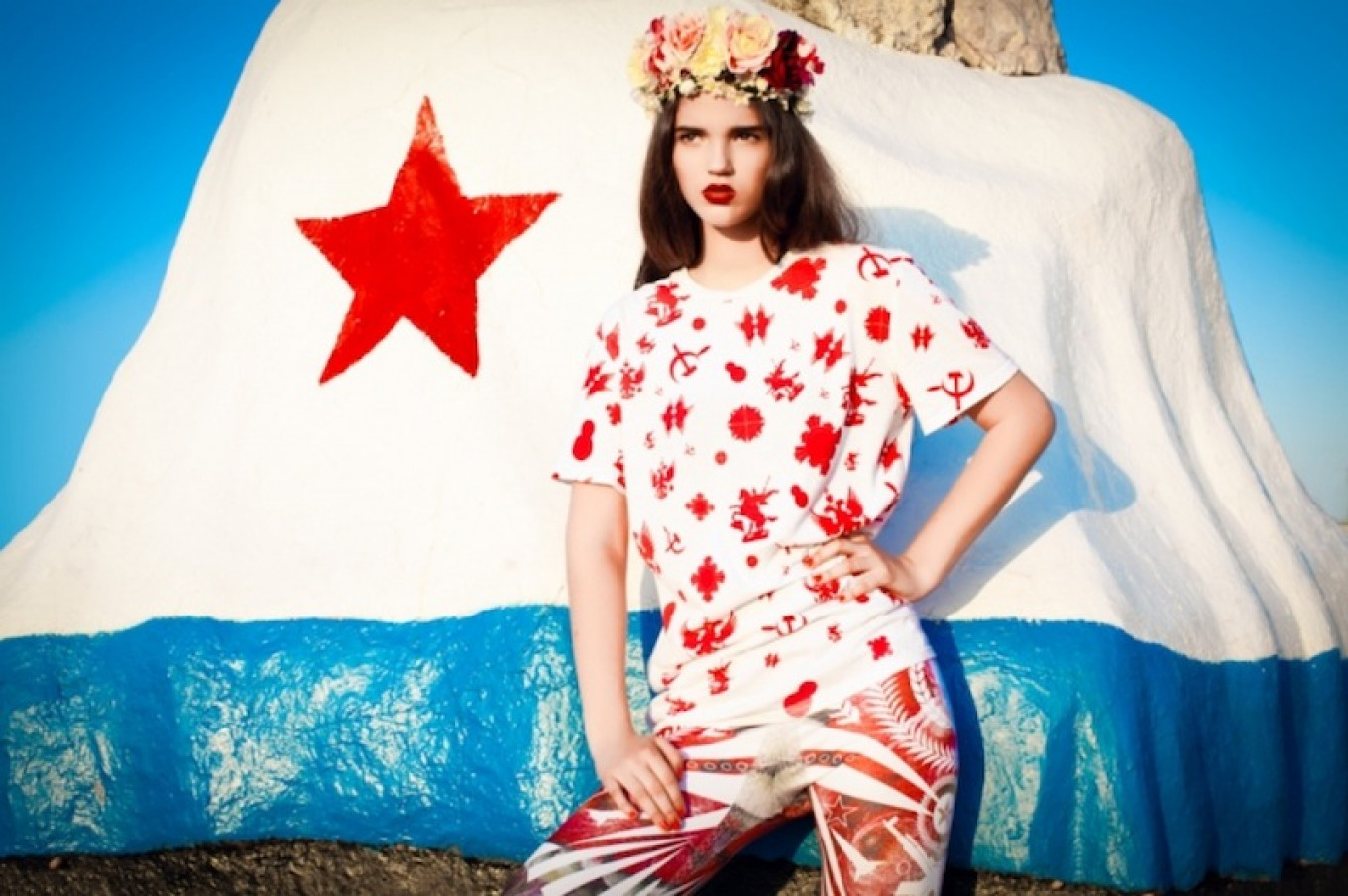
Dreaming of the Past
Businessmen like Konasov are unsure of what the next craze in T-shirts will be. “I wish I knew,” he says. But others are already mining a deep vein of nostalgia in Russian society. Nostalgia is particularly intense about the Soviet period. An April survey conducted by independent Levada Center pollster showed over half of all Russians regretted the break-up of the Soviet Union, and 44 percent would like to see the resurrection of the Soviet system.
Earlier this year, 28-year-old Muscovite Yevgeny Raikov relaunched the production of Soviet-era sneakers Dva Myacha, which were mass-produced in the 1960s and 1970s. And last year, Alexander Malanin, 35, and Yakov Teplitsky, 36, launched their company OLOVO, which uses modern materials and slight redesigns to repackage Red Army military clothing. They are open about the appeal of their clothes to feelings of nostalgia and patriotism.
“We started when we saw some beautiful, mind-blowing items from the Soviet army,” says Teplitsky. “There is nothing more patriotic in a state than the concept of an army, so creating a military-based clothing has patriotism encrypted in the brand’s DNA.”
They have scoured old military storage depots and incorporate 1969 military blankets into the jackets they produce. They say their target buyers are men aged between 30 and 45 who were born in the Soviet Union.
“People are looking back,” says Teplitsky. “The demand is huge and we have bigger and bigger plans with each passing day,” adds Malanin.
A Message from The Moscow Times:
Dear readers,
We are facing unprecedented challenges. Russia's Prosecutor General's Office has designated The Moscow Times as an "undesirable" organization, criminalizing our work and putting our staff at risk of prosecution. This follows our earlier unjust labeling as a "foreign agent."
These actions are direct attempts to silence independent journalism in Russia. The authorities claim our work "discredits the decisions of the Russian leadership." We see things differently: we strive to provide accurate, unbiased reporting on Russia.
We, the journalists of The Moscow Times, refuse to be silenced. But to continue our work, we need your help.
Your support, no matter how small, makes a world of difference. If you can, please support us monthly starting from just $2. It's quick to set up, and every contribution makes a significant impact.
By supporting The Moscow Times, you're defending open, independent journalism in the face of repression. Thank you for standing with us.
Remind me later.



